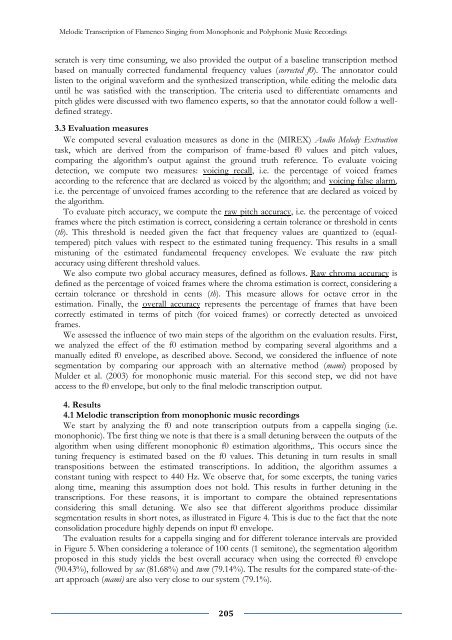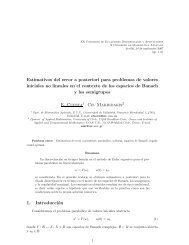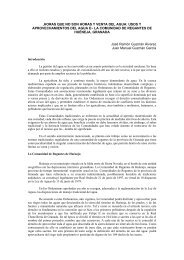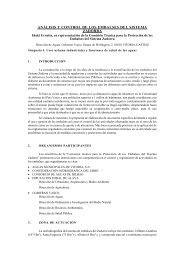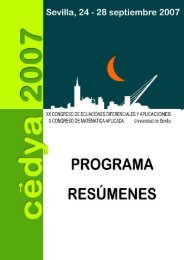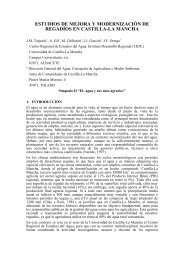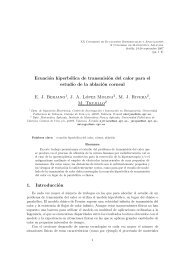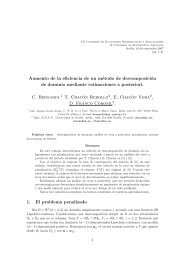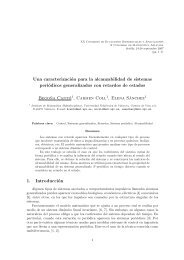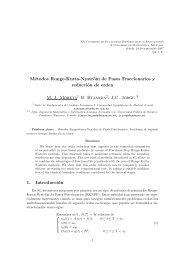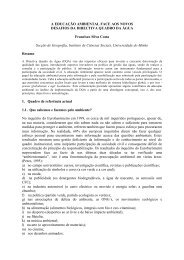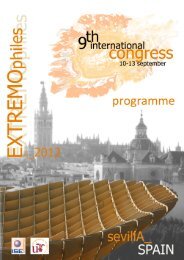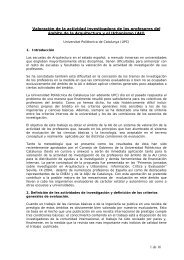LIBRO DE ACTAS (pdf) - Universidad de Sevilla
LIBRO DE ACTAS (pdf) - Universidad de Sevilla
LIBRO DE ACTAS (pdf) - Universidad de Sevilla
Create successful ePaper yourself
Turn your PDF publications into a flip-book with our unique Google optimized e-Paper software.
Melodic Transcription of Flamenco Singing from Monophonic and Polyphonic Music Recordings<br />
scratch is very time consuming, we also provi<strong>de</strong>d the output of a baseline transcription method<br />
based on manually corrected fundamental frequency values (corrected f0). The annotator could<br />
listen to the original waveform and the synthesized transcription, while editing the melodic data<br />
until he was satisfied with the transcription. The criteria used to differentiate ornaments and<br />
pitch gli<strong>de</strong>s were discussed with two flamenco experts, so that the annotator could follow a well<strong>de</strong>fined<br />
strategy.<br />
3.3 Evaluation measures<br />
We computed several evaluation measures as done in the (MIREX) Audio Melody Extraction<br />
task, which are <strong>de</strong>rived from the comparison of frame-based f0 values and pitch values,<br />
comparing the algorithm’s output against the ground truth reference. To evaluate voicing<br />
<strong>de</strong>tection, we compute two measures: voicing recall, i.e. the percentage of voiced frames<br />
according to the reference that are <strong>de</strong>clared as voiced by the algorithm; and voicing false alarm,<br />
i.e. the percentage of unvoiced frames according to the reference that are <strong>de</strong>clared as voiced by<br />
the algorithm.<br />
To evaluate pitch accuracy, we compute the raw pitch accuracy, i.e. the percentage of voiced<br />
frames where the pitch estimation is correct, consi<strong>de</strong>ring a certain tolerance or threshold in cents<br />
(th). This threshold is nee<strong>de</strong>d given the fact that frequency values are quantized to (equaltempered)<br />
pitch values with respect to the estimated tuning frequency. This results in a small<br />
mistuning of the estimated fundamental frequency envelopes. We evaluate the raw pitch<br />
accuracy using different threshold values.<br />
We also compute two global accuracy measures, <strong>de</strong>fined as follows. Raw chroma accuracy is<br />
<strong>de</strong>fined as the percentage of voiced frames where the chroma estimation is correct, consi<strong>de</strong>ring a<br />
certain tolerance or threshold in cents (th). This measure allows for octave error in the<br />
estimation. Finally, the overall accuracy represents the percentage of frames that have been<br />
correctly estimated in terms of pitch (for voiced frames) or correctly <strong>de</strong>tected as unvoiced<br />
frames.<br />
We assessed the influence of two main steps of the algorithm on the evaluation results. First,<br />
we analyzed the effect of the f0 estimation method by comparing several algorithms and a<br />
manually edited f0 envelope, as <strong>de</strong>scribed above. Second, we consi<strong>de</strong>red the influence of note<br />
segmentation by comparing our approach with an alternative method (mami) proposed by<br />
Mul<strong>de</strong>r et al. (2003) for monophonic music material. For this second step, we did not have<br />
access to the f0 envelope, but only to the final melodic transcription output.<br />
4. Results<br />
4.1 Melodic transcription from monophonic music recordings<br />
We start by analyzing the f0 and note transcription outputs from a cappella singing (i.e.<br />
monophonic). The first thing we note is that there is a small <strong>de</strong>tuning between the outputs of the<br />
algorithm when using different monophonic f0 estimation algorithms,. This occurs since the<br />
tuning frequency is estimated based on the f0 values. This <strong>de</strong>tuning in turn results in small<br />
transpositions between the estimated transcriptions. In addition, the algorithm assumes a<br />
constant tuning with respect to 440 Hz. We observe that, for some excerpts, the tuning varies<br />
along time, meaning this assumption does not hold. This results in further <strong>de</strong>tuning in the<br />
transcriptions. For these reasons, it is important to compare the obtained representations<br />
consi<strong>de</strong>ring this small <strong>de</strong>tuning. We also see that different algorithms produce dissimilar<br />
segmentation results in short notes, as illustrated in Figure 4. This is due to the fact that the note<br />
consolidation procedure highly <strong>de</strong>pends on input f0 envelope.<br />
The evaluation results for a cappella singing and for different tolerance intervals are provi<strong>de</strong>d<br />
in Figure 5. When consi<strong>de</strong>ring a tolerance of 100 cents (1 semitone), the segmentation algorithm<br />
proposed in this study yields the best overall accuracy when using the corrected f0 envelope<br />
(90.43%), followed by sac (81.68%) and twm (79.14%). The results for the compared state-of-theart<br />
approach (mami) are also very close to our system (79.1%).<br />
205


